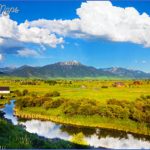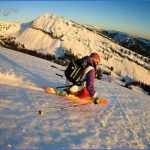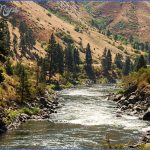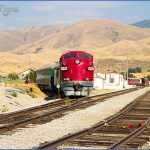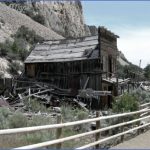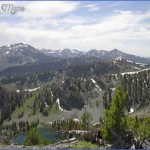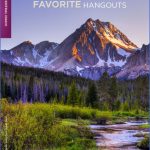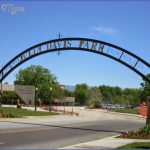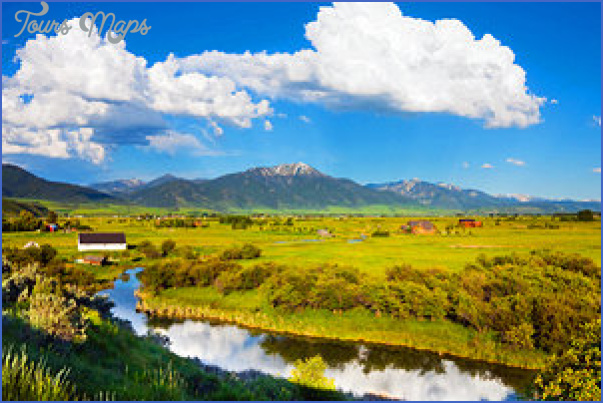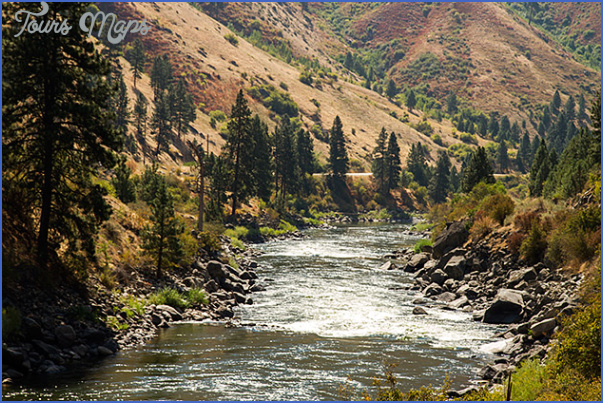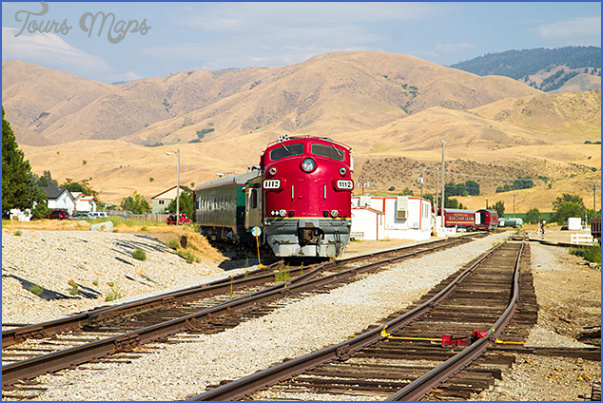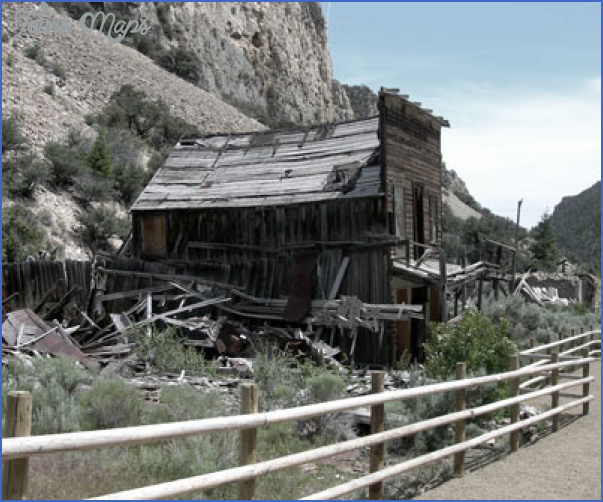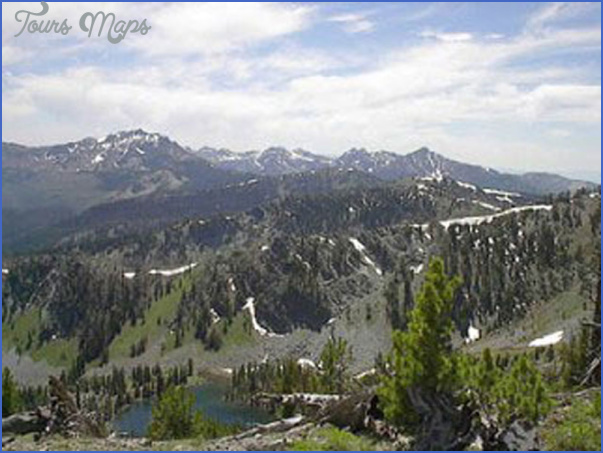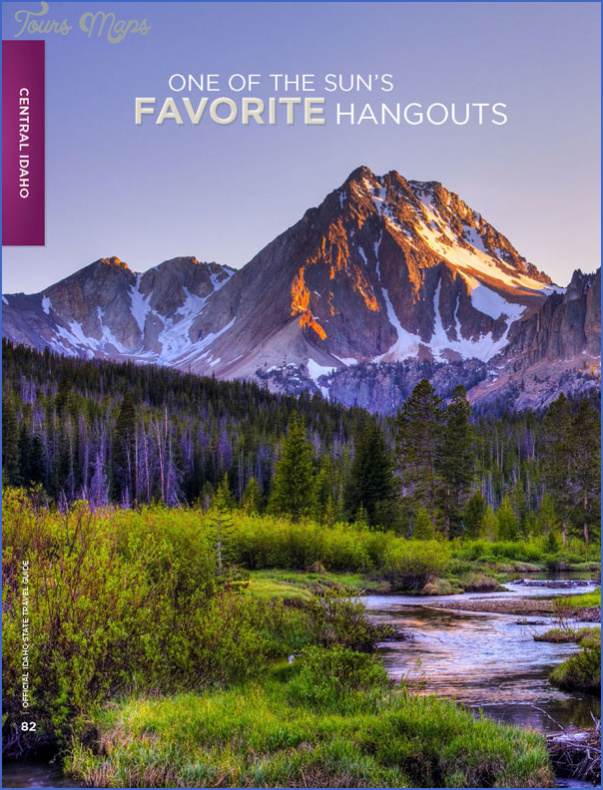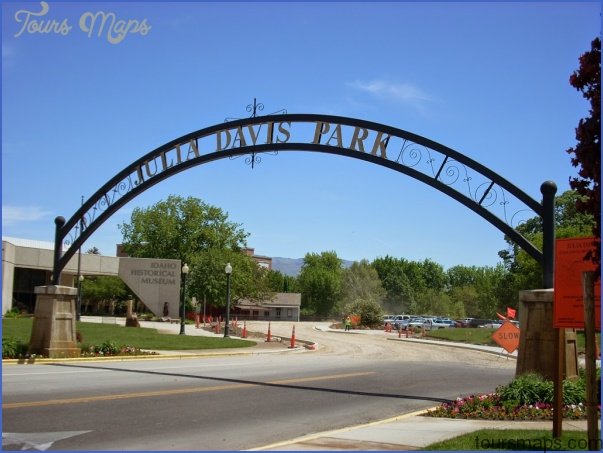SALMON NATIONAL FOREST
This National Forest in east-central Idaho encompasses several mountain ranges, including the Salmon River Mountains and Bitterroot Mountains, with jagged peaks as high as 11,000 feet and outstanding views.
A section of the Salmon National Wild and Scenic River flows through the region. There are also many lakes and streams, sagebrush scrublands, meadows, and forests of Douglas fir, spruce, lodgepole and ponderosa pine. Wildlife includes elk, deer, bear, moose, bighorn sheep, and bobcat.
The National Forest has one designated wilderness area, consisting of 427,000 acres of the
2,361,767-acre Frank Church-River of No Return Wildernesslargest such wilderness in the lower 48 states, and shared by five other National Forests.
Activities: There are over 1,200 miles of trails for hiking and backpacking, including a section of the Continental Divide Trail (see entry page 122). Difficulty varies from easy to strenuous. High trails are likely to be snow-free only from July through mid-September.
Most trails are open to horseback riding, and mountain biking is allowed on trails outside of the wilderness area. Cross-country skiing is possible during the winter. Climbing is another option in the mountains here.
White-water rafting, kayaking, and canoeing are available on the Salmon River. A permit is required in advance to float a 79-mile stretch of this river during summer. There’s also ample fishing. Hunting is allowed in season.
Camping Regulations: One may camp in most parts of Salmon National Forest, except near public recreation areas or where posted otherwise. No permits are required. Campfires are discouraged but allowed. A stove is recommended for cooking.
For Further Information: Salmon National Forest, P.O. Box 729, Salmon, ID 83467; (208)756-2215.
Idaho Guide for Tourist Photo Gallery
Maybe You Like Them Too
- Explore the Beautiful Town of Saint-Alban, France with This Map
- Explore the Beautiful City of Southport, Australia with This Map
- Explore Sasbach, Germany with our Interactive Map
- Explore Nevestino, Bulgaria with this Detailed Map
- Explore Pulau Sebang Malaysia with this Detailed Map

